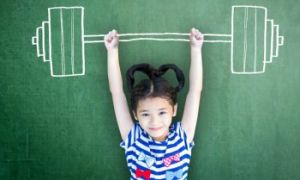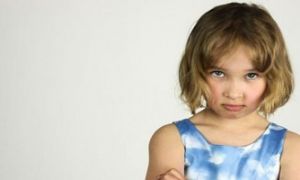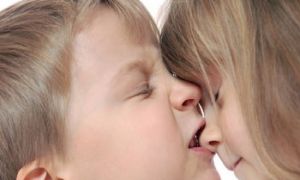Children’s early experiences consist of interactions with parents, other family members, Educators and teachers as well as their environment. Due to the rapid nature of brain development in early childhood, the quality of early experiences deeply impacts their emerging selfhood and how they respond to the world around them for the rest of their life. This can be broadly thought to constitute the core of their social and emotional development and here is how it is linked to the EYLF.
0-1 Year
If all goes well, by the end of the first year, babies are forming close relationships with caregivers, soothing themselves when they are upset and beginning to play and share with others. Socially by eight months, they can:
- React with arousal, attention or approach to the presence of another baby or young child
- Respond to own name
- Smile often and show excitement when see preparations being made for meals or for a bath
- Recognise familiar people and stretches arms to be picked up
Emotionally, By Eight Months Babies:
- Are becoming more settled in eating and sleeping patterns
- Are laughing, especially during social interactions
- May soothe self when tired or upset by sucking thumb or dummy
- Begin to show wariness of strangers and may fret when a parent leaves the room
Such actions which babies use to engage with others around them and show attachment to primary caregivers, using verbal and non-verbal language, link to EYLF Outcome 5 - Children are effective communicators – and more specifically to Element 5.1 ‘Children interact verbally and nonverbally with others for a range of purposes.
Also by expressing their need for comfort and assistance, babies’ social and emotional development at this stage can be linked to EYLF Outcome 1 - Children have a strong sense of identity – particularly to Element 1.1 ‘Children feel safe, secure and supported. ’
Between 8 and 12 Months, Babies:
- Show definite anxiety or wariness at the appearance of strangers
- Actively seek out the company of parents or primary caregivers
- Offer toy to adult but does not release it
- Show signs of empathy to the distress of another (but often soothes self)
- Actively explore and play when parent present, returning now and then for assurance and interaction
Through such actions, children give evidence of their growing capacity to understand, self-regulate and manage their emotions and thus can be linked to EYLF Outcome 3 - Children have a strong sense of wellbeing – and especially to Element 3.1 ‘Children become strong in their social and emotional wellbeing.
Also, their developing self-regulation skills can be linked to EYLF Outcome 1 - Children have a strong sense of identity – and particularly to, Element 1.2, ‘Children develop their emerging autonomy, inter-dependence, resilience and sense of agency.
1-2 years
Between one and two years, children are getting more assured in expressing needs and desires even as they are seeking out the company of peers. This phase of social development shows them:
- Beginning to cooperate when playing
- Engaging in parallel play in which they play alongside other toddlers, doing what they Do but without seeming to interact
- Curious and energetic, but still seeking out an adult presence for reassurance
Emotionally, they:
- May continue to show anxiety when separating from significant people in their lives
- Seek comfort when upset or afraid
- Take a cue from the parent or principal carer regarding attitude toward a stranger
- May act out when tired or frustrated
- Assist another in distress by patting, making sympathetic noises or offering material objects
These actions of toddlers demonstrate a growing awareness of the presence of other children and people and that they have their own needs and comforts. Thus social development of this phase can be linked to EYLF Outcome 1 - Children have a strong sense of identity – and especially to Element 1.4, ‘Children learn to interact in relation to others with care, empathy and respect.
Also as they are reaching out and communicating for comfort, assistance and companionship, this stage of toddlers’ emotional development can be linked to Element 1.3, ‘Children develop knowledgeable and confident self-identities
2-3 Years
As they grow older, toddlers become very interested in their peers – they are keen to make connections and explore ways of reaching out to others. Emotionally, they begin to assert themselves and can have mood swings though they can also show more awareness of the feelings and needs of others. The actions which indicate this stage of social development are:
- Playing with other children
- Engaging in simple make-believe play
- Sometimes preferring same-sex playmates and toys
- Often unwilling to share toys with other children
In their emotional lives, children:
- Show strong attachment to a parent or main family carer
- Shows distress and protest when they leave and want that person to do things for them
- Begin to show guilt or remorse for misdeeds
- Demands adult attention
Such actions that show children being playful and responding positively to others, especially peers, reaching out for company and friendship reveal links with EYLF Outcome 2 - Children are connected with and contribute to their world – and particularly with Element 2. 1 ‘Children develop a sense of belonging to groups and communities and an understanding of the reciprocal rights and responsibilities necessary for active community participation.
Also as they discover and explore some connections amongst people, their growing social/emotional understanding can be linked to Element, 2.3. ‘Children become aware of fairness.
3-5 Years
In this stage, children are learning to be self-sufficient not only in their personal habits like toileting, feeding and dressing but also in regulating their own emotions. Also, as they become more independent, they are more interested in reaching out to others and cooperating in play and activities. Thus actions that demonstrate this are:
- Enjoyable playing with other children
- Often having a particular friend
- Smiling and sharing toys with peers
- Jointly manipulating objects with one or two other peers
Emotionally, children:
- Understand when someone is hurt and comfort them
- Attain gender stability (sure she/he is a girl/boy)
- May show a stronger preference for same-sex playmates and enforce gender-role Norms with peers
- May show bouts of aggression with peers
- Like giving and receiving affection from parents
- May praise themselves and be boastful
Children’s growing independence in matters like personal hygiene as well as care and safety for themselves and others can be linked to EYLF Outcome 3 – Children have a strong sense of well-being and especially, Element 3.2, ‘Children take increasing responsibility for their own health and physical well-being.
Also, their ability to show concern for others at this stage can be linked to EYLF Outcome 2 - Children are connected with and contribute to their world – and particularly to Element 2.2, ‘Children respond to diversity with respect.
References:
- Developmental milestones and the Early Years Learning Framework and the National Quality Standards, ACECQA
- The Early Years Learning Framework For Australia, ACECQA


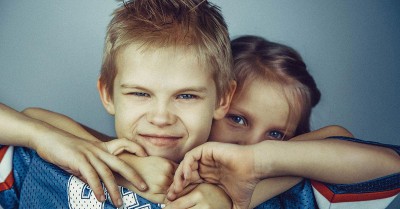
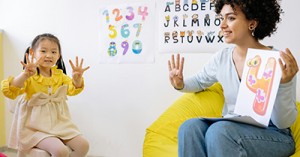
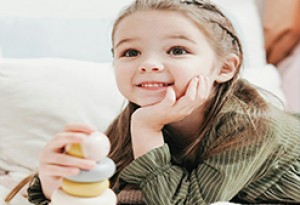
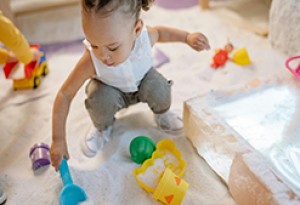
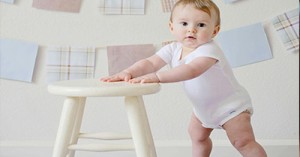
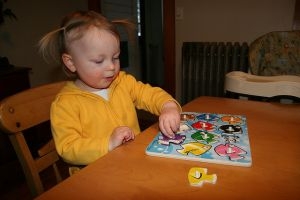 Toddlers have a greater understanding of the world around them by this stage. Their cognitive development (also known as intellectual development and thinking skills) continues
Toddlers have a greater understanding of the world around them by this stage. Their cognitive development (also known as intellectual development and thinking skills) continues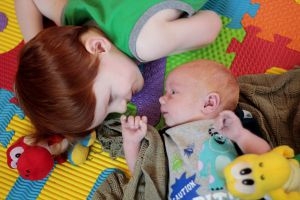 Infants begin to develop trust when parents begin to fulfil their needs. Such as changing an infant's nappy when needed, feeding on request and holding
Infants begin to develop trust when parents begin to fulfil their needs. Such as changing an infant's nappy when needed, feeding on request and holding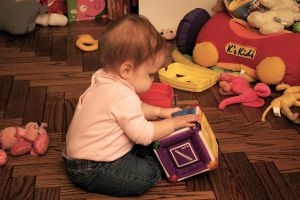 Beginning at birth the construction of thought processes, such as memory, problem solving, exploration of objects etc, is an important part of an infant’s cognitive
Beginning at birth the construction of thought processes, such as memory, problem solving, exploration of objects etc, is an important part of an infant’s cognitive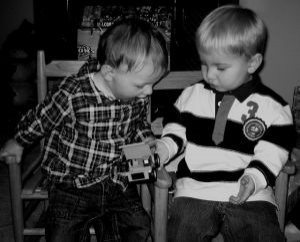 Toddlers want to do more on their own and do not like it when you begin to establish limits on their behaviour. Tantrums can become
Toddlers want to do more on their own and do not like it when you begin to establish limits on their behaviour. Tantrums can become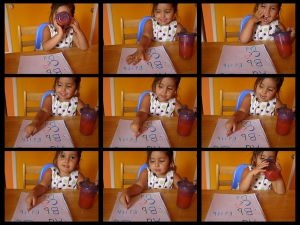 Your preschooler is now able to focus their attention more accurately and is less influenced by distractions. The intensity of questions increase as your child
Your preschooler is now able to focus their attention more accurately and is less influenced by distractions. The intensity of questions increase as your child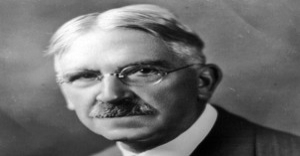 John Dewey is often seen as the proponent of learning by doing – rather than learning by passively receiving. He believed that each child was active,
John Dewey is often seen as the proponent of learning by doing – rather than learning by passively receiving. He believed that each child was active,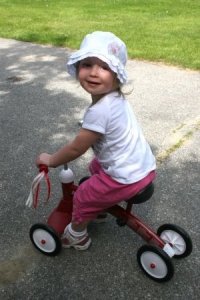 Toddler advance and gains new skills in Gross Motor Development milestones achieved throughout earlier years. Co-ordination and challenges that could not be performed before such
Toddler advance and gains new skills in Gross Motor Development milestones achieved throughout earlier years. Co-ordination and challenges that could not be performed before such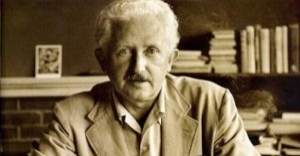 Erik Erikson developed a psychosocial theory to understand how we each develop our identities through eight stages of psychosocial development from infancy to adulthood. The
Erik Erikson developed a psychosocial theory to understand how we each develop our identities through eight stages of psychosocial development from infancy to adulthood. The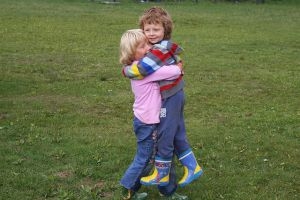 At this point preschoolers begin to interact effectively with others. Play becomes more innovative and organized and “boyfriend” or “girlfriend” begins to emerge. Preschoolers have
At this point preschoolers begin to interact effectively with others. Play becomes more innovative and organized and “boyfriend” or “girlfriend” begins to emerge. Preschoolers have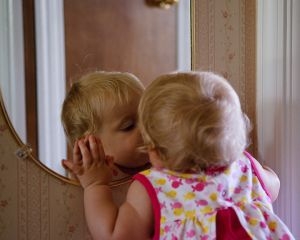 From now, babies begin to identify and respond to their own feelings, understanding other's feelings & needs and interact positively with others. A baby's social and
From now, babies begin to identify and respond to their own feelings, understanding other's feelings & needs and interact positively with others. A baby's social and